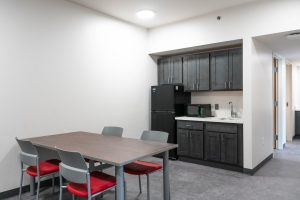Diverse Repertoire Aids CME Performance
October 11, 2013
If the electric atmosphere before the Contemporary Music Ensemble’s performance with eighth blackbird was any indication of what was to come, it was thanks to the pre-concert enthusiasm of the audience. Students, alumni, professors and community members filled Warner Concert Hall with energy that was palpable and directed squarely at the joint performers. Eighth blackbird, a three-time Grammy-winning sextet founded at Oberlin in 1996, was a highlight on its own, as were the featured compositions they helped bring to life. What unfolded was an incredible performance that reaffirmed one’s faith in the future of contemporary music.
From the minute CME appeared on stage with eighth blackbird, it was evident this concert was going to be extraordinary. What gave the performance its magic was not only the skill of the musicians or the beauty of the pieces they were performing, but the connections between the performers eighth blackbird performed pieces commissioned for them as well as pieces composed by Oberlin professors. The majority of these pieces, including Skipping Stones by Professor of TIMARA Tom Lopez, OC ’89; whirligig by Lisa Kaplan, OC ’96; What the Light Was Like by Benjamin Broening and Six Ways Through a Glass of Absinthe by Professor of TIMARA Peter Swendsen, OC ’98, were composed in the last year.
The concert began with the aptly-titled Skipping Stones. Lopez created what can only be thought of as a musical stone for the players of eighth blackbird to throw into the water, to be repeated and evolved through ripples by CME’s musicians. It featured traditional instrumentation employed by both ensembles: flute, violin, piano, clarinet, cello and viola, as well as piccolo and electronics. Non-traditional instruments such as a kazoo and a toy train whistle were also featured. This composition was the musical equivalent of passing the torch from one generation of contemporary musicians to the next. It seemed to suggest a strong relationship between the ensembles that rippled throughout the rest of the CME’s performance.
The next piece, Amers by Finnish composer Kaija Saariaho, featured the cello prominently. The music evoked images of a journey, expressed concretely by Nicholas Photinos, OC ’96, eighth blackbird’s cellist. The CME musicians supplemented his rich, low notes. The composer himself describes the cello as being “a kind of boat moving in different directions in this sea of sound of electronics and ensemble.” The combination of elements created a hypnotic atmosphere, compelling the audience to let go of their physical awareness and allow the cello to guide them.
Quickly pulling us back into the moment was Kaplan’s piece whirligig, described as “for piano four hands.” Each of the three movements presented its audience with a new relationship between Kaplan and three different musicians, who all shared the same piano. The first movement, “off-kilter,” was reminiscent of a friendship with a competitive edge with its playful, hyperactive melody and increasingly insistent tempo. In the end, Kaplan’s sparring partner was chased quite literally off the piano. The second movement, “Merry-go-round,” was incredibly intimate. The two hands glided past one another the way two secret lovers might interact with each other in a public setting. The third movement, played with Kaplan’s former Professor of Piano Sanford Margolis, was loud, passionate and energetic, and ended the piece on a high note.
Fortunately, Derek Bermel’s Tied Shifts picked up exactly where whirligig left off. The feel of the piece is best explained by Bermel’s eclectic musical background, but more specifically his visit to Bulgaria and study of Bulgarian folk music. This performance was a fascinating interplay of visual and audio components. The musicians involved created multiple stories: romances, first encounters and aggression both playful and serious. It was a brilliant example of what is called gesamtkunstwerk, or “total work of art,” surrounding our senses in both sight and sound.
After the intermission, the performance resumed with a piece by Benjamin Broening, Oberlin composer-in-residence, titled What the Light Was Like and inspired by Amy Clampitt’s poem of the same name. The piece was elegant, subtle and lingering, placed perfectly in the concert. Unlike the other pieces, it crept up and filled the space slowly, and before they knew it, the audience found itself completely surrounded by the music. This was a piece that, as Kaplan said, left “the music to speak for itself.”
The last ripple of the stone brought the performance full circle. Six Ways Through a Glass of Absinthe makes into music the mood of the painting on which it was based, Pablo Picasso’s 1911 “Glass of Absinthe,” which is currently in the collection of the Allen Memorial Art Museum. Swendsen seamlessly blended music with the recorded sounds of Paris, incorporating a carousel, café noises and bells from an opera house. The tones of the instruments aligned perfectly with the recorded sounds of city life, reminding the audience that they were in a public music space while simultaneously carrying them away to a far-off locale. This duality of experience was emphasized by the appearance of six CME musicians whose instruments corresponded directly to each eighth blackbird member, so that there were two of each of the flutists, clarinetists, violinists, cellists, percussionists and pianists.
The complexity of CME and eighth blackbird’s performance was due not only to the intricacies of the music, but to the relationships shared by the composers and musicians, as mentors and students in both the visual and sonic arts.

























